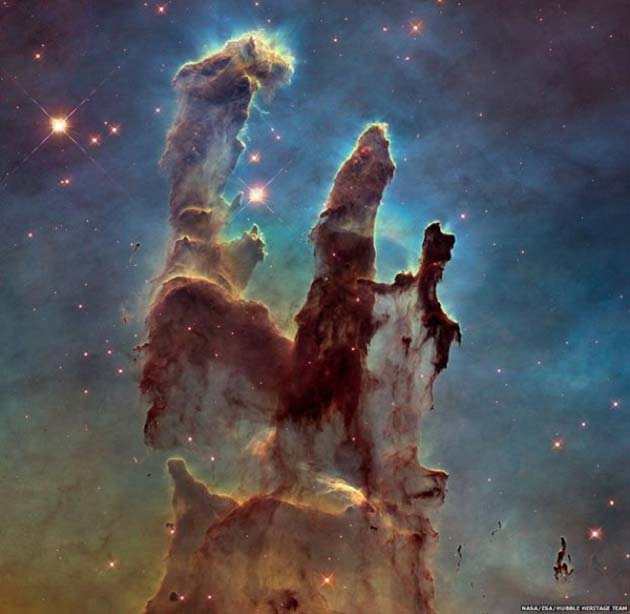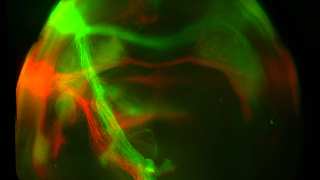Last week, the Hubble telescope stood down from observing and put itself into “safe mode” after one of its gyroscopes, which keeps it aimed at objects of scientific interest in space, died.
Built with multiple redundancies, Hubble had six new gyros installed during Servicing Mission-4 in 2009. The telescope usually uses three gyros at a time for maximum efficiency, but it can continue to make scientific observations with just one.
Astronauts on a space shuttle servicing mission in 2009 replaced all six of Hubble's gyroscopes, but NASA no longer has the option of sending a shuttle for repairs as the shuttle program shut down in 2011.
Since its launch, the space telescope has made over 163,500 trips around Earth, more than 1.5 million observations of over 43,500 celestial objects and generated 153 terabytes of data, as per cnet.com.
The telescope orbits high up, around 350 miles up, but its path decays over time, due to the small particles from the Earth’s upper atmosphere that bombard the spacecraft and drag it down towards our planet.
Technical Glitch in Hubble’s Gyroscope
The gyroscope that failed had been exhibiting end-of-life behavior for approximately a year, and its failure was not unexpected; two other gyro devices of the same type have already failed. The remaining three available for use are technically enhanced, and, therefore, are expected to have significantly longer operational lives.
After the recent mechanical failure, controllers have tried to switch to a different gyroscope, but that was found to be malfunctioning. This essentially leaves Hubble with only two fully functional ones.
On October 5th, 2018, Hubble was operating with two enhanced gyroscopes and the lone older model with the third upgraded unit (powered down but ready to use, if needed).
The failing scope had problems earlier in the mission with “noisy” electrical signals, but engineers developed a software patch to permit normal operation.
Hubble entered the safe mode after one of the three gyroscopes, actively being used to point and steady the telescope, failed. This mode puts the telescope into a stable configuration until ground control can correct the issue and return the mission to normal operation.
Will It Be Revived?
Dr. Rachel Osten, deputy mission head for the Hubble Space Telescope, tweeted, "Very stressful weekend. Right now, HST is in safe mode while we figure out what to do. Another gyro failed. First step is try to bring back the last gyro, which had been off, and is being problematic."
Science operations with Hubble have been suspended while NASA investigates the anomaly. An anomaly review board, which will include experts from the Hubble team and industry, familiar with the design and performance of this type of gyroscope, is being formed to investigate this issue and develop a recovery plan.
- the outcome of this investigation results in recovery of the malfunctioning device, Hubble will resume science operations in its standard three-gyro configuration.
If the outcome indicates that the gyroscope is not usable, Hubble will resume science operations in an already defined “reduced-gyro” mode that uses only one. While the mode offers less sky coverage at any particular time, there is a relatively limited impact on overall scientific capabilities.
Besides delivering jaw-dropping images of the universe around us, Hubble is responsible for a series of scientific discoveries, including what may be the first-known exomoon in orbit around a world outside our solar system.

Stunning space images taken from the Hubble telescope. (Source: NASA)
Ultimately, getting the gyroscope up and running would be the best-case scenario here. Also, time is crucial because the Hubble can’t perform effectively while in the safe mode. During this time, all of the spacecraft’s instruments are shut down, while only the most essential systems needed to keep the vehicle running will remain functional.
According to BBC News, the James Webb Space Telescope (JWST) is Hubble's designated successor, but it has experienced a series of delays and will not launch until 2021, at the earliest.
Astronomers have recently been talking about how they can extend Hubble's life so that it could continue to serve the astronomy community.
"In many respects, James Webb is going to be very superior to Hubble, but not in every respect," said Prof. Nial Tanvir of Leicester University in the UK. He added, "There are some things we're only going to be able to do with Hubble for the foreseeable future. So, there's been a great hope in the astronomical community that Hubble could continue doing that sort of science even when James Webb was launched."
Hopefully, there is still more science to come from Hubble, once it exits safe mode.
Top Image: The Hubble telescope. (Source: www.history.com)







No comment